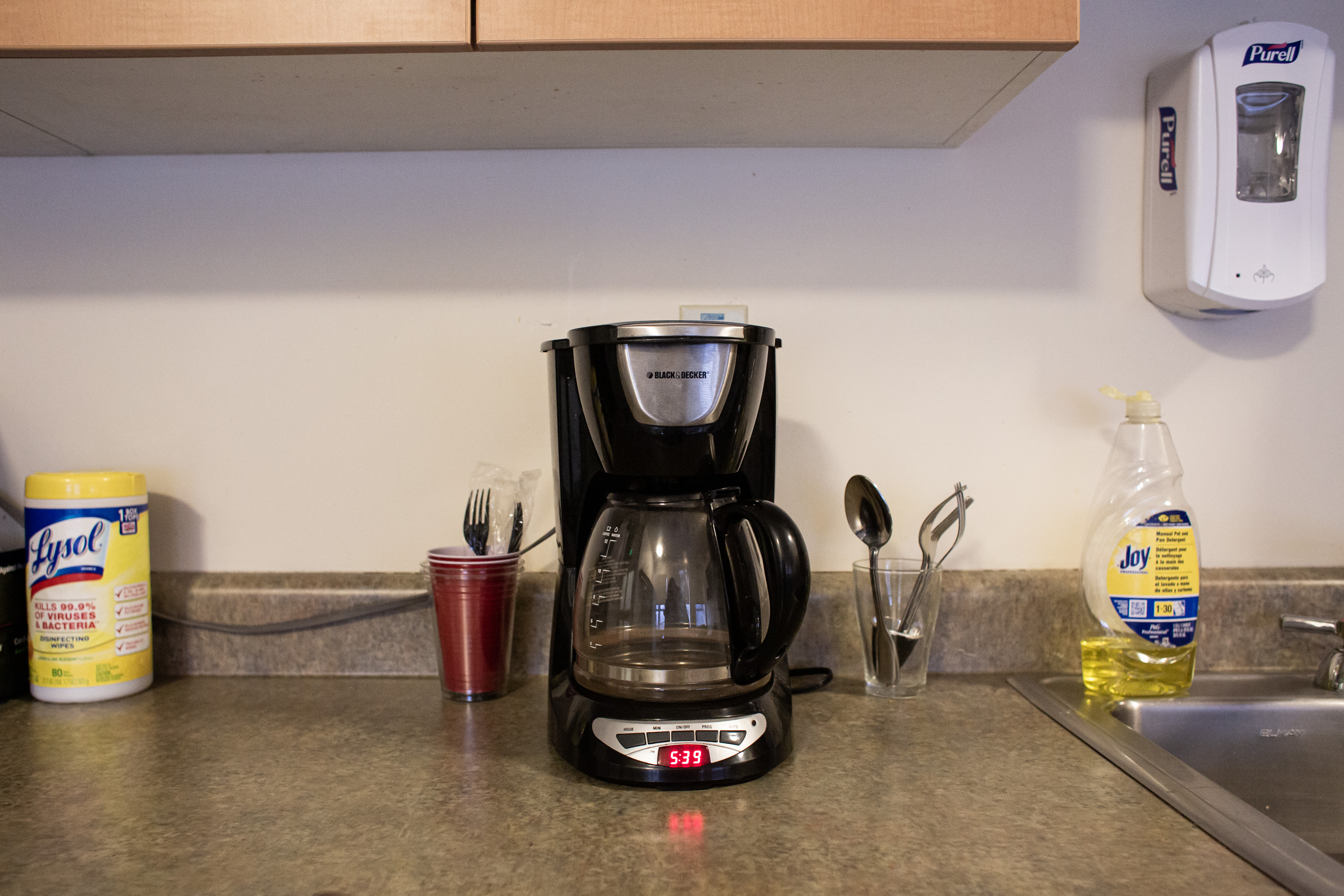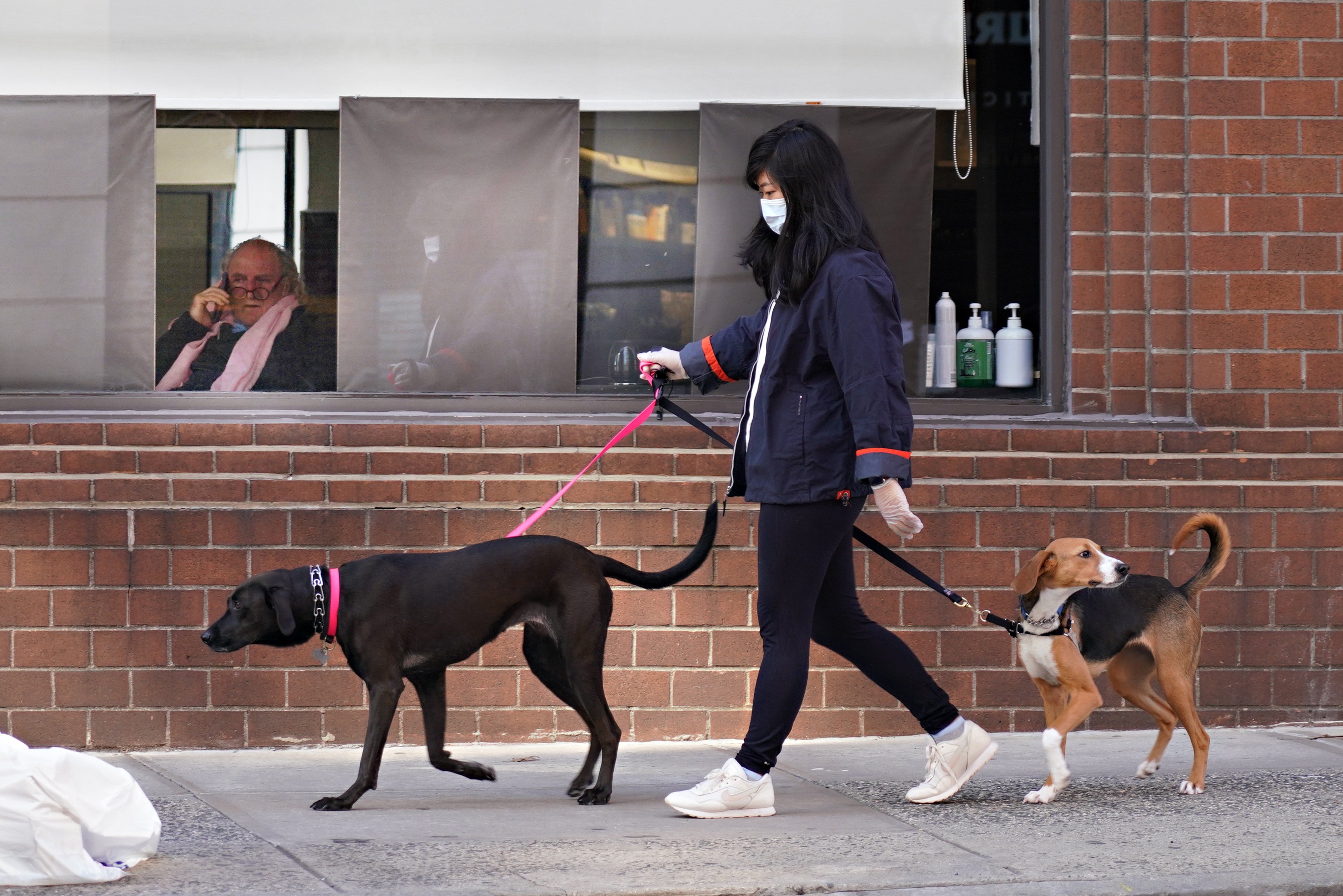
Getty Lysol can kill coronavirus.
The coronavirus outbreak has forced millions of Americans to stay isolated inside of their homes in an attempt to slow the spread. But what do you do if a family member, roommate, or significant other becomes sick?
The short answer is to quarantine that person in a different part of the home with a separate bathroom. But that is not an option in many households, which is why regular disinfecting practices are essential in a shared home.
The National Institutes of Health has learned the virus can survive on various surfaces for varying amounts of time. For example, COVID-19 can live on stainless steel and plastic for up to three days and as long as 24 hours on cardboard.
Here’s what you need to know.
1. CDC: Coronavirus Patients Should Use a Separate Bedroom & Bathroom If Possible & Wear a Face Mask Around Family Members
The Centers for Disease Control and Prevention has strongly advocated practicing social distancing to contain the spread of the coronavirus. That means remaining at least six feet away from people. NIAID Director Dr. Anthony Fauci and Coronavirus Response Coordinator Dr. Deborah Birx say six feet is the recommendation because that’s how far your droplets can travel when you sneeze or cough.
That rule applies inside your own home to combat contagion as well. The CDC says that if someone in your house becomes sick with the virus, the best thing to do is to isolate that person in a separate area. The patient should sleep in a different bedroom and use a separate bathroom. If it’s your spouse or romantic partner who has become sick, you should not share a bed.
When the infected person comes around others, they should wear a face mask to prevent spreading droplets through the air. If the patient is struggling to breathe and cannot wear a surgical mask, then caregivers should wear face masks instead.
Experts also recommend running the air conditioner or keeping windows open, if the weather allows it, to allow for good air flow in shared spaces.
2. Disinfect Shared Surfaces Often & Avoid Sharing Household Items Like Dishes & Towels

Children are taught that sharing is a positive attribute. That is not the case right now.
If someone in your home is sick, designate which household items that person can use. For example, patients should have their own plate, cups and silverware that is off-limits to everyone else. Do not share towels, bedsheets, or pillows. New Zealand’s Ministry of Health also advises against preparing food alongside anyone with COVID-19.
Routine cleaning needs to be implemented as well. After using kitchen items, wash them thoroughly with warm water and soap or immediately place them in the dishwasher. The CDC recommends disinfecting common areas daily and the department’s website includes the following language on this subject:
“Clean all “high-touch” surfaces, such as counters, tabletops, doorknobs, bathroom fixtures, toilets, phones, keyboards, tablets, and bedside tables, every day. Also, clean any surfaces that may have blood, stool, or body fluids on them.
Use a household cleaning spray or wipe, according to the label instructions. Labels contain instructions for safe and effective use of the cleaning product including precautions you should take when applying the product, such as wearing gloves and making sure you have good ventilation during use of the product.”
And of course, be sure to wash your hands regularly for at least 20 seconds at a time. Don’t touch your face, especially after interacting with the patient.
3. NHS: It’s Fine to Mix Clothing In the Washing Machine, But Use Gloves When Handling a Patient’s Clothing

The National Health Service, which is the publicly funded health care system in the United Kingdom, explains on its website that it’s safe to clean everyone’s clothing together in the washing machine. You do not need to wash a coronavirus patient’s clothing separately. However, do not shake the dirty laundry before placing it in the machine.
The Centers for Disease Control also says it’s fine to use your regular detergents and bleach. Wash in the warmest possible water depending on the type of clothing.
If you’re living with a contagious patient, the CDC advises wearing gloves while handling that person’s clothing and avoid touching the clothes with any part of your bare skin. This is especially important if the laundry has “blood, stool, or body fluids on them.” But the risk of the virus spreading through sweat or tears is low, according to HealthLinkBC.
4. There Is No Evidence Your Pet Will Spread COVID-19, But Health Professionals Say Patients Should Avoid Contact With Dogs & Cats Anyway

Your dog or cat is not going to infect you with the coronavirus. The World Health Organization says there is no evidence to suggest that household pets can transmit the virus from one person to another. The WHO said in a statement:
“While there has been one instance of a dog being infected in Hong Kong, to date, there is no evidence that a dog, cat or any pet can transmit COVID-19. COVID-19 is mainly spread through droplets produced when an infected person coughs, sneezes, or speaks. To protect yourself, clean your hands frequently and thoroughly.”
The American Veterinary Medical Association has also downplayed any possible risk of COVID-19 spreading via a dog’s fur. Chief Veterinary Officer Gail Golab told the Washington Post, “The virus survives best on smooth surfaces, such as countertops and doorknobs. Porous materials, such as pet fur, tend to absorb and trap pathogens, making it harder to contract them through touch.”
However, despite these assurances, the Centers for Disease Control still recommends that dogs or cats be kept away from a patient sick with the coronavirus. Why? Because scientists are still learning about COVID-19 and are not yet sure whether an animal could pose a risk to the patient. The CDC explains:
“When possible, have another member of your household care for your animals while you are sick. If you are sick with COVID-19, avoid contact with your pet, including petting, snuggling, being kissed or licked, and sharing food. If you must care for your pet or be around animals while you are sick, wash your hands before and after you interact with pets.”
The College of Veterinary Medicine at the University of Illinois adds that although the risk of transmission from a dog is low, it is better to be safe than sorry. “Pets can have the virus ON THEM if they are in an environment with a large quantity of the virus and could serve to be a source of the virus for other people, including family members.”
5. High-Risk Family Members Should Not Care For Coronavirus Patients

Getty
It’s not always possible to isolate an infected family member. For instance, a parent or other caregiver could not leave a sick child to their own devices.
The health experts at Johns Hopkins University say caregivers should wear face masks when caring for a patient. And if at all possible, the “main caregivers should be those who are not at high risk from COVID-19, meaning those not over age sixty or with underlying health issues.”
For parents who work at “essential” businesses and health care facilities, and are relying on babysitters to care for their children, Johns Hopkins recommends using a limited number of sitters. It’s best to keep the circle of people in contact with your family as small as possible to mitigate risk.
READ NEXT: NJ Man Coughed On Grocery Worker & Said He Had Coronavirus, Cops Say